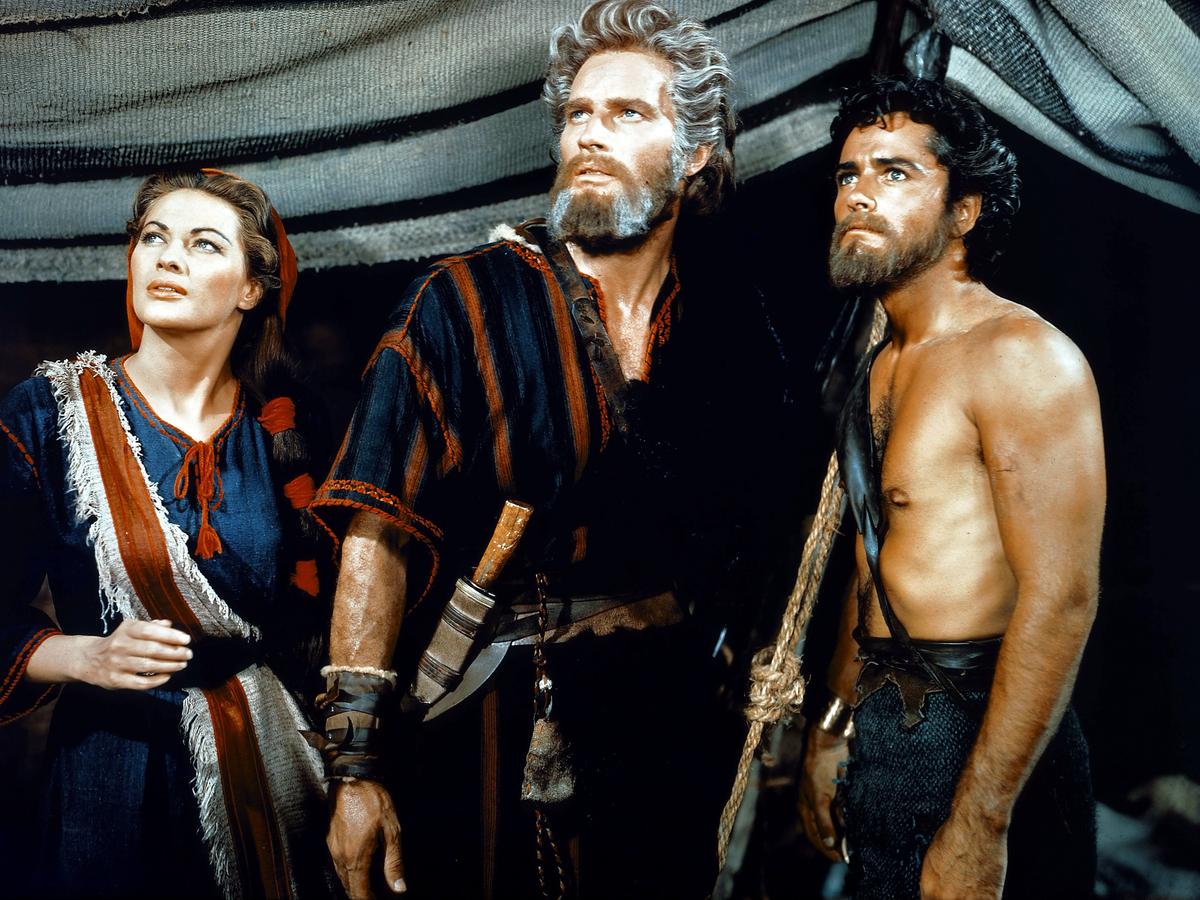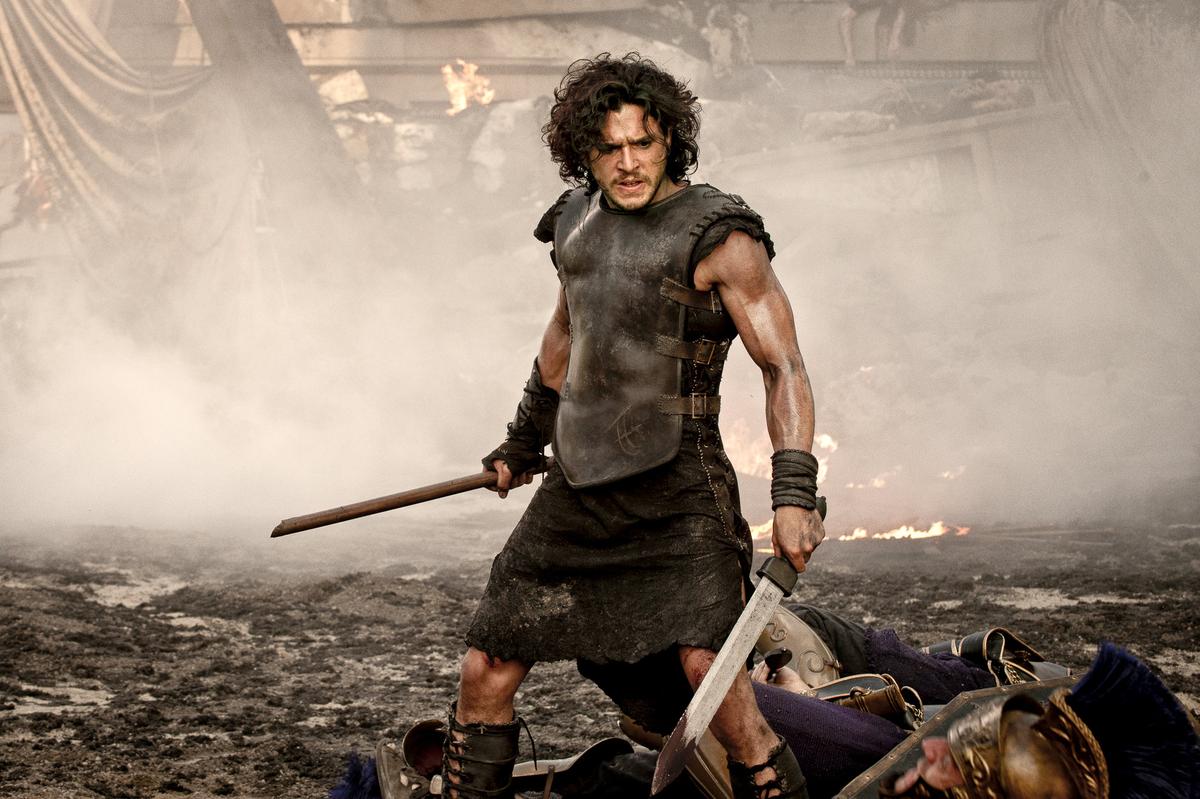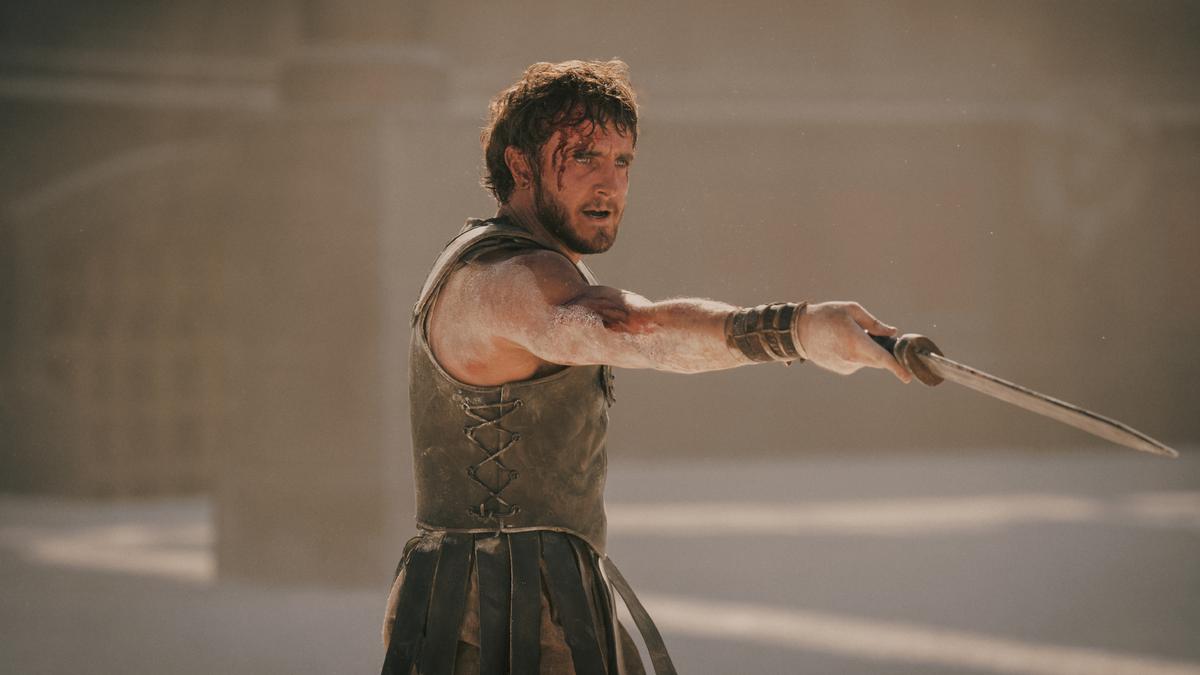In the beginning there was, no, not the Word, although that was there too, but we are talking about the beginning of Hollywood’s exploitation of the Bible for spectacle on the screen – so in the beginning there was Was the word. The 50s and 60s were the golden age of epic spectacle in Hollywood with 1959 Ben-Hur be the jewel in the colorful crown.
The sea battle and chariot race are still a real hit, as is Charlton Heston as a Jewish prince who is wronged by his best friend, the Roman turned evil enemy Messala (Stephen Boyd). Ben-Hur’s roaring quest for revenge is only curbed when he sees Christ forgive those who struck him down from the cross.
The Golden Age
While some of the stories from this period were taken from the Bible, including Cecil B. DeMille’s Samson and Delilah (1949) with Victor Mature and Hedy Lamarr and The Ten Commandments (1956) with Heston as Moses, another prince in search of his inheritance, as well as the red-hot Yul Brynner as Ramses and Anne Baxter as Nefretiri, there were other films with references to the Bible.
The Robe (1953), Richard Burton plays the tribune who commands the unit that crucifies Christ and tells how the experience changes him. Quo Vadis (1951), set in the final years of Emperor Nero’s reign, Peter Ustinov had the most fun as the Emperor – I can see him staring through the emerald in my mind’s eye. Quo Vadiswhich means “Where are you going?” are the first words that Saint Peter said to the risen Christ on the Via Appia.

Yvonne De Carlo, Charlton Heston and John Derek in a scene from the film “The Ten Commandments” | Photo credit: Archive Photos
Stanley Kubrick, as always, marched to his own tune and with Spartacus (1960) he did so in a spectacularly quiet way. Set, according to the voice-over, “in the last century before the birth of the new faith called Christianity,” the film is about a slave who became a gladiator and led a rebellion against the pagan Romans (yes, yes, Ridley Scott’s gladiator (also follows similar rhythms) stars deliciously dimpled Kirk Douglas as Spartacus. Ustinov has fun as Batiatus, who recruits Spartacus for his gladiator school, but it is Laurence Olivier as Crassus and his famous parting line from the bathtub to his slave, “My tastes include both snails and oysters,” that shocks and delights moviegoers.

A digital turnaround
In the new millennium, swords and togas experienced a renaissance, starting with Scott’s Oscar-winning gladiator in 2000. The Christian undertones were removed as we all bowed down to the digital deity we had created, and CGI was king. From blowing up a model of the Colosseum to filming animals in front of a green screen and then stitching them together into frames, plenty of VFX magic was used. Russell Crowe played Maximus, a Roman general forced into slavery, while Joaquin Phoenix is much more fun as the evil, incestuous Emperor Commodus than as a certain frowning clown.

The biblical epic made a comeback 10 years ago with Darren Aronofsky’s Noah (2014), in which Crowe played the Old Testament patriarch, as well as remakes of The Ten Commandments And Ben-Hur. Scott’s Exodus: Gods and Kings (2014) featured Christian Bale as Moses, who crosses swords with Joel Edgerton’s Ramses II. Scott’s Foreigner Star Sigourney Weaver also starred in the film as Queen Tuya. Timur Bekmambetov’s Ben-Hur (2016) with Jack Huston and Toby Kebbell as Ben-Hur and Messala was not much fun.

A lack of imagination
Paul WS Anderson’s Pompeiialso in 2014, was epically terrible. The film is set against the backdrop of the eruption of Vesuvius in 79 AD and played game of Thrones“Kit Harington as a gladiator and so on and so forth. Carrie-Anne Moss and Kiefer Sutherland, among others, looked like they desperately wanted to be smothered by the ash of Vesuvius. The film also proved that no matter how great the technological advances, nothing can replace imagination, which is reassuring in a way, because the day AI can create a gripping film is the day Skynet really takes over.

A still from Paul WS Anderson’s “Pompeii”
Ancient Greece and Rome were better portrayed on the small screen with HBO’s Rome traces the power struggles during the time of Julius Caesar over two well-regarded seasons and Starz’ SpartacusThe latter series, created by Sam Raimi, tells the story of the slave general who took on the power of the Roman Empire in three excellent seasons.
Rome during the time of Julius Caesar offers plenty of material for drama with its battles, political maneuvers and crises of faith over the divine right of kings. Caesar led Rome to the top with his conquests and public buildings, but with the formula of bread and games he also paved the way for Rome’s downfall.

Those who are about to die, which was released on Amazon Prime Video last month and is loosely inspired by Daniel P. Mannix’s book of the same name, which also served as inspiration for gladiator was incredibly bad, with CGI without any imagination. Hopefully Gladiator IIalso directed by Scott and starring Paul Mescal, Pedro Pascal, Connie Nielsen and Denzel Washington, will prove to be a perfect blend of cutting-edge visual effects and fantasy. If not, we can always go back to Ben-Hurthe galley slave number 41, the exciting sea battle and the goosebump-inducing chariot race. Incidentally, the chariot race in the galaxy far, far away finds an echo in Anakin’s pod race in The Phantom Menace, NO?

